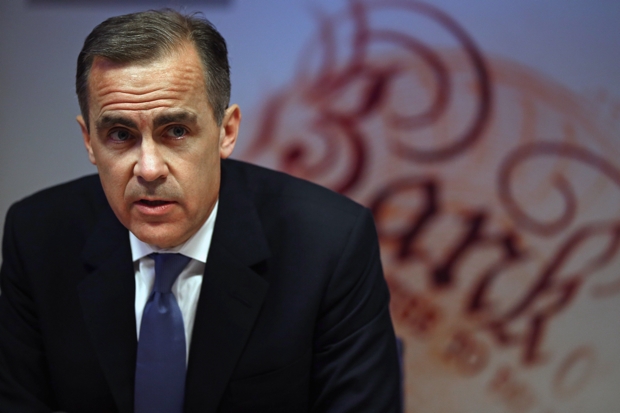Just about anyone, except it seems for the Bank of England’s forecasting department, could have seen this one coming. When the Bank’s Governor Mark Carney decided to bundle a stack of fresh data on the state of the economy into a single ‘Super Thursday’ package released every three months, someone could have checked the calendar and pointed out that the second one would fall on Bonfire Night. The jokes about expecting fireworks, followed by the tweets about damp squibs, were always inevitable. At the very least, they could have started a month later, and avoided that round of jokes.
Forecasting, however, has been a weak spot of the Bank’s in recent years. Under Carney, it has turned out to be no better at working out what is going on with the economy than under his predecessors. As it turned out, the second ‘Super Thursday’ has not proved much more exciting than the last one. Interest rates were kept on hold for the sixty-sixth month in a row. The inflation forecasts were tweaked slightly, and so were the growth forecasts, but not so much as to make any difference to the likely direction of policy. Beforehand, the markets had more or less decided that rates weren’t rising any time soon. And afterwards? Pretty much the same conclusion, except with a few more charts to back it up.
The problem with Carney is that he is rapidly turning into the Tony Blair of central bankers. He loves an ‘eye-catching gimmick’ that turns out in practise not to have very much substance to it. Since he took up the post in 2013, he has introduced a series of innovations to the way the Bank does its job. First up was ‘forward guidance’, which involved laying out what conditions needed to be met before the Bank raised rates. It was quite a good idea, in the sense that anyone could take a look and say, oh, if A or B is happening, then rates will rise soon and I better fix my mortgage. There was a flaw, however, and quite a serious one: he didn’t actually mean it. Rates were meant to rise when unemployment fell below 7 percent, but when it did, the rise was scrapped. After that, we had ‘Forward Guide 2.0’, which involved promising a rate rise when a range of targets were met. That didn’t amount to much either. These days there is more chance of Fred Goodwin being offered a seat on the Monetary Policy Committee than anyone mentioning ‘forward guidance’.
Now we have ‘Super Thursdays’, when the Bank reveals its medium-term thinking, and sets out the path for rates rises. Except the first couple have now passed without anyone really being any the wiser. Two or three more, and the chances are we will all have lost interest.
Carney is not a bad Governor. Within the very tight constraints of the job, he is a pretty good one. His weakness is that he over-sells himself. In reality, it is incredibly difficult for the Bank to raise rates until the Federal Reserve does in the US, and while Mario Draghi at the ECB is still printing euros like a mad thing. The impact on the exchange rate would be too dramatic, and the last thing the UK needs right now is an over-valued pound. In reality, the British economy is in okay shape, and there isn’t really anything Carney can do about it anyway. Perhaps he should just come out and say that – even though it would be hard to spin it as ‘Super Thursday’ announcement.






Comments